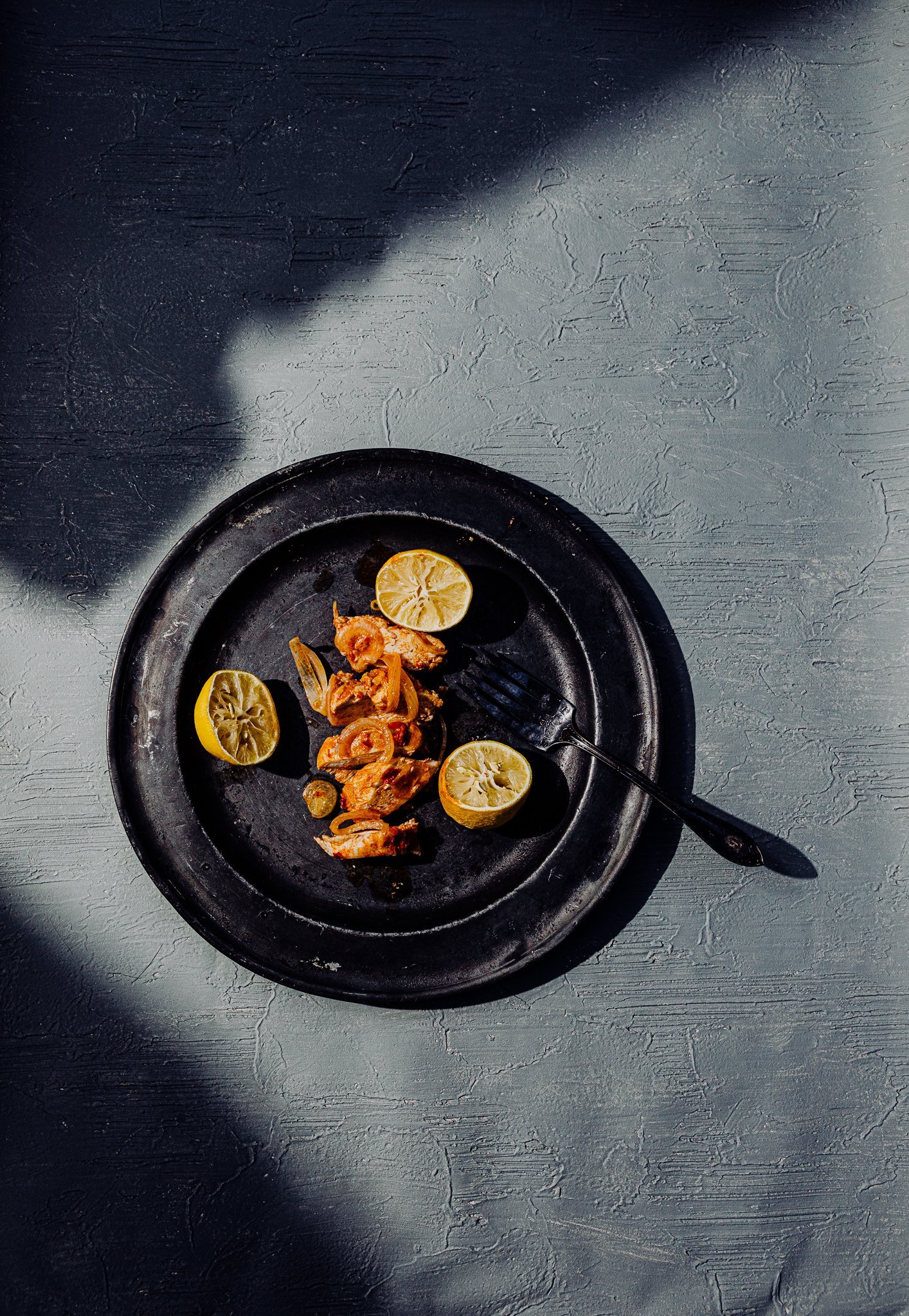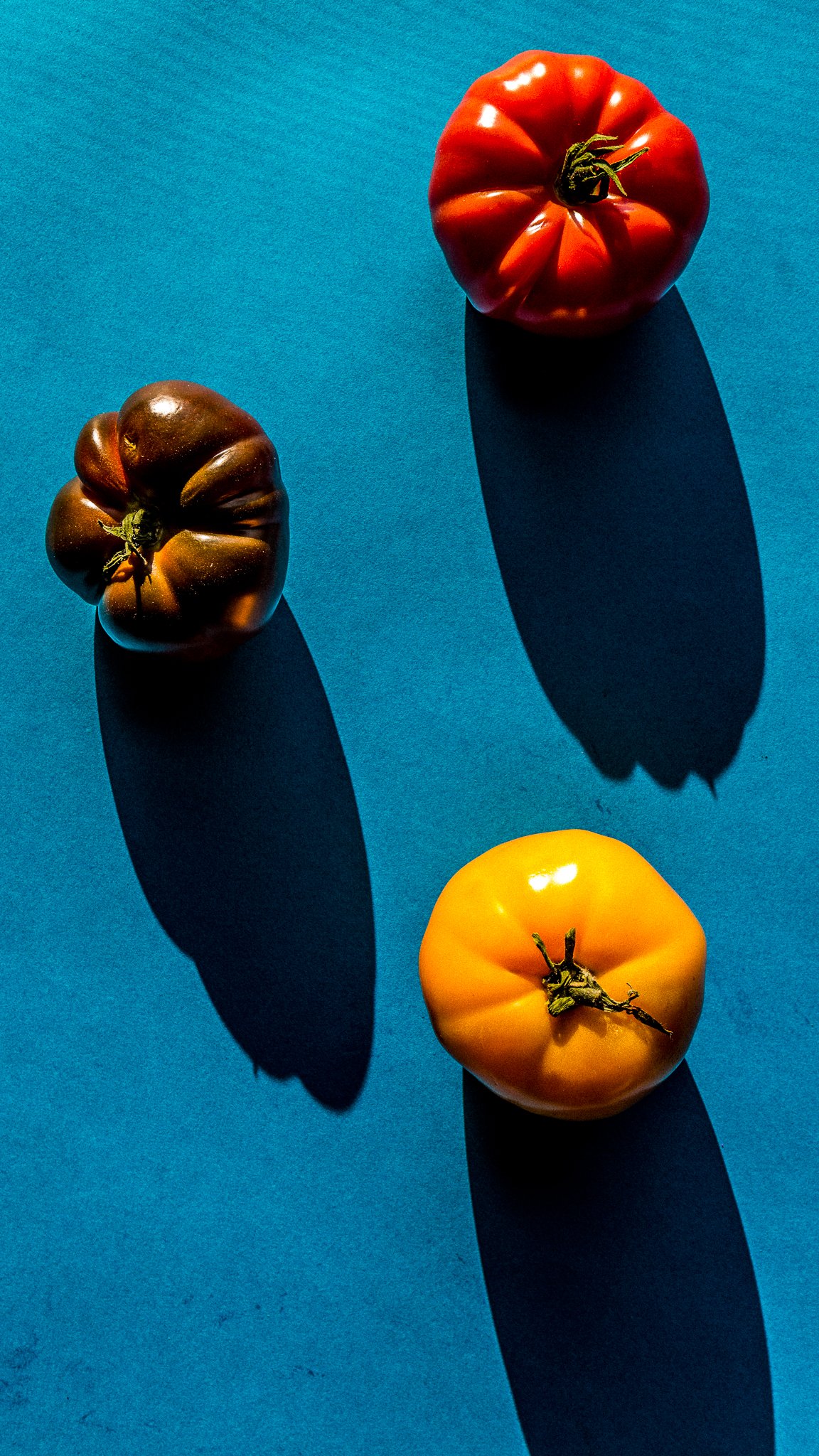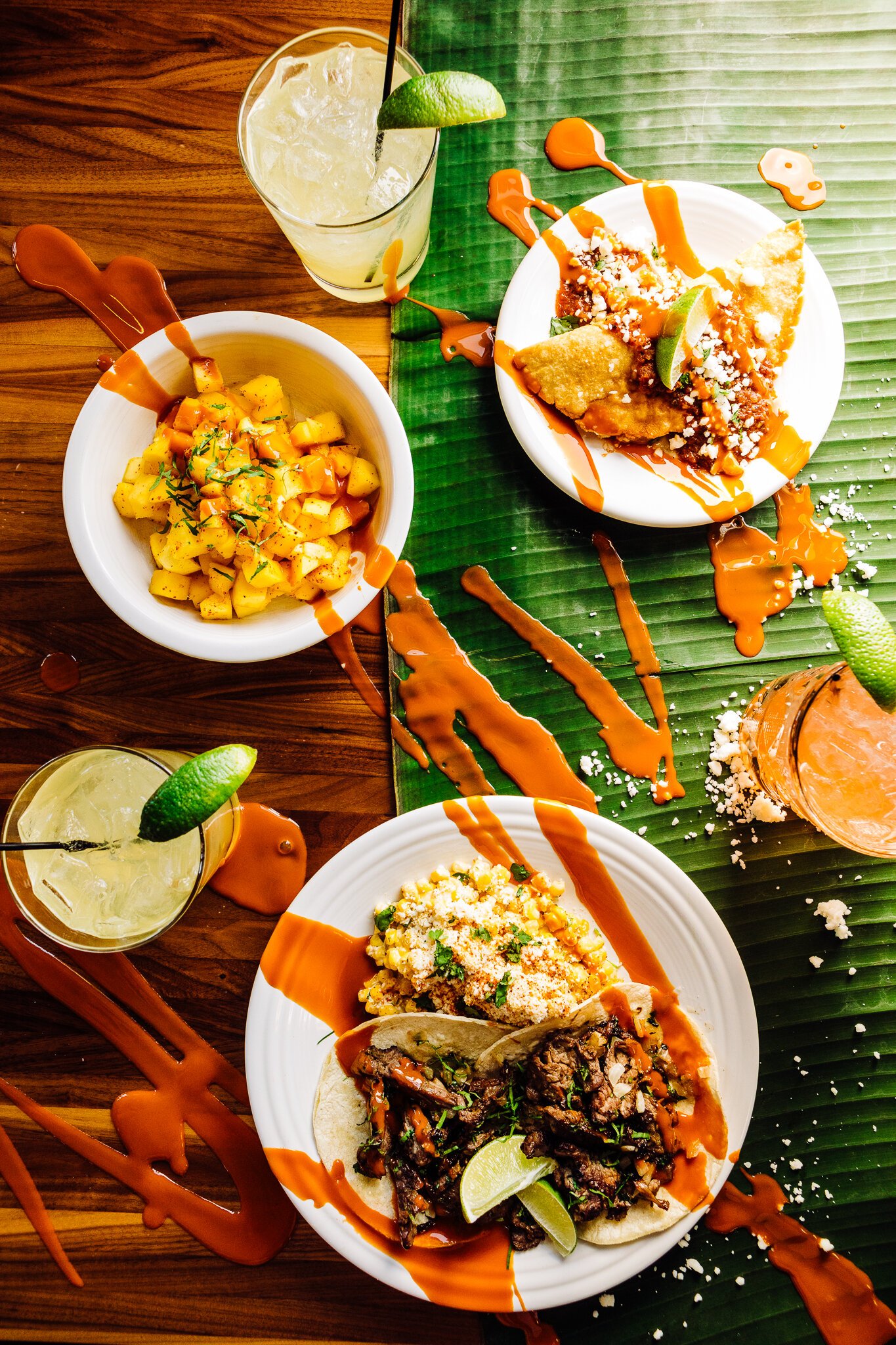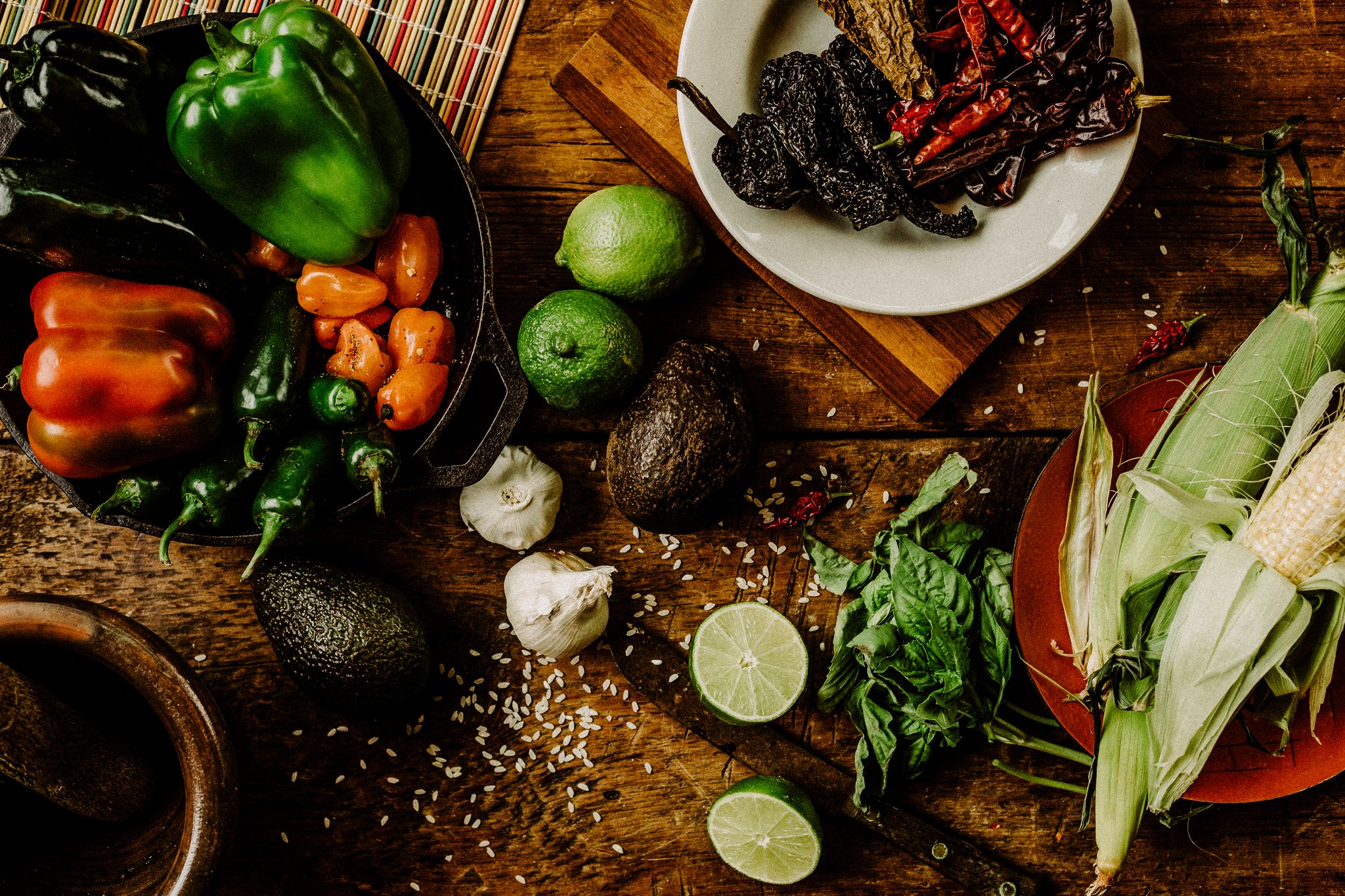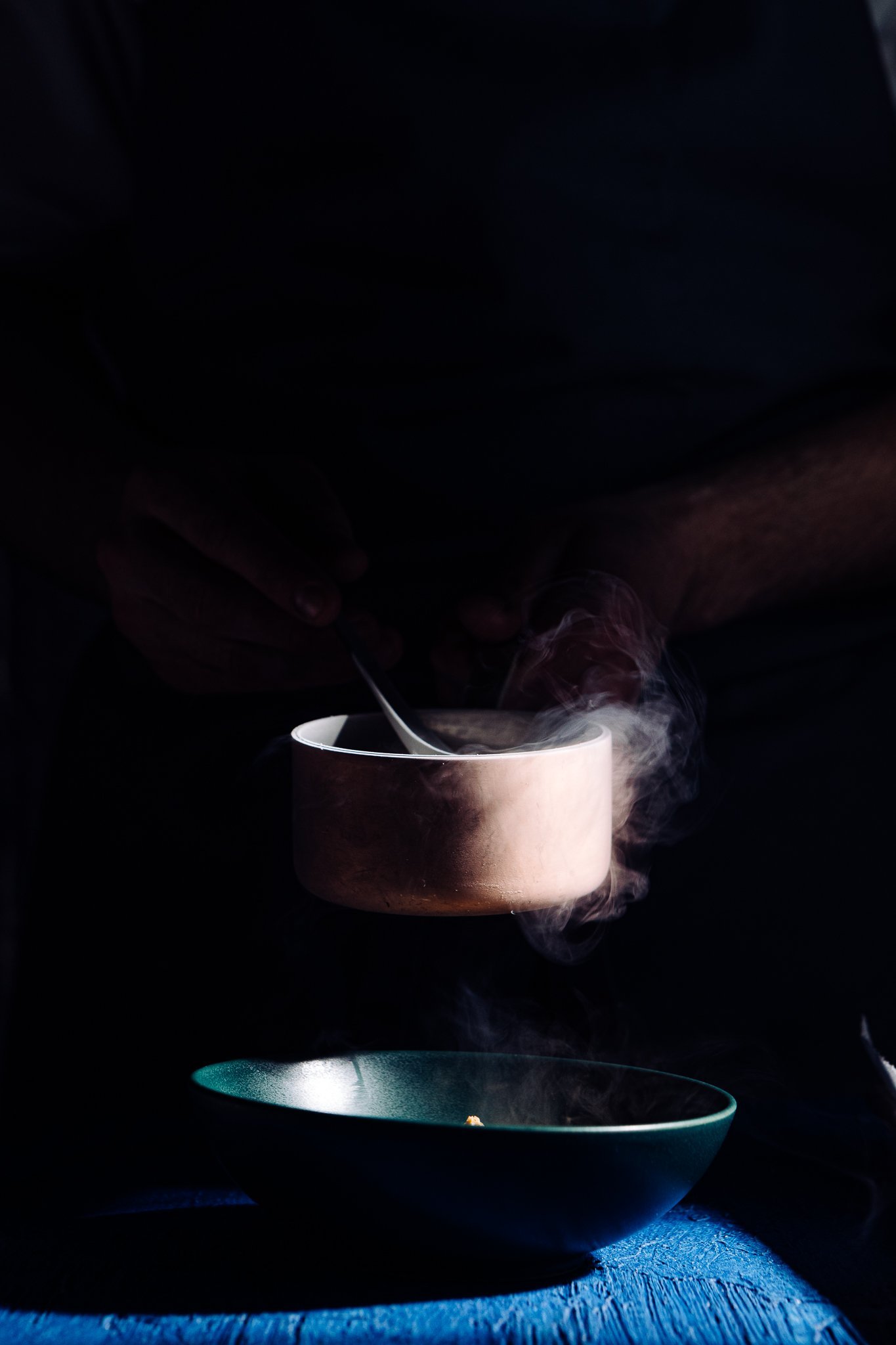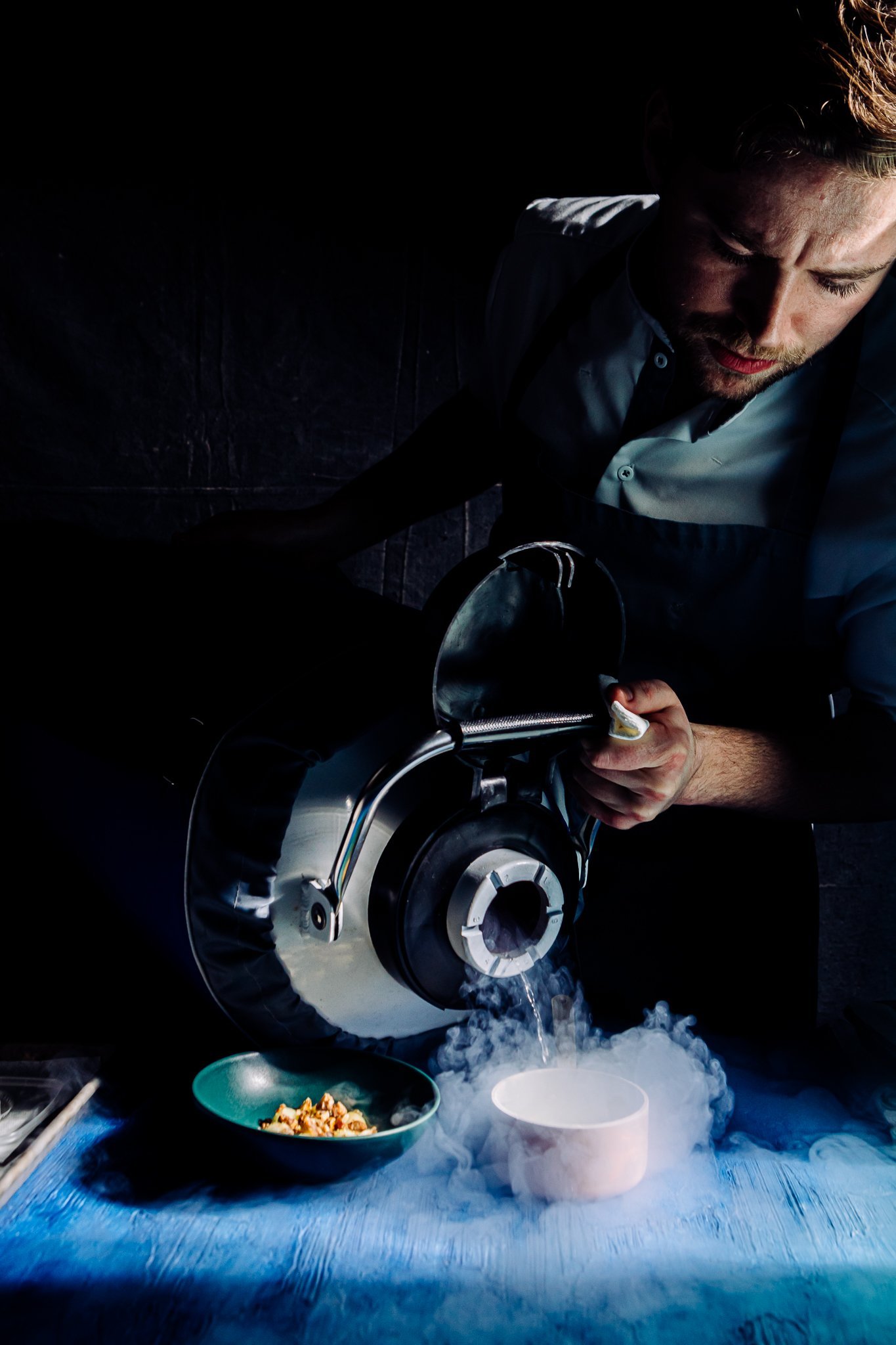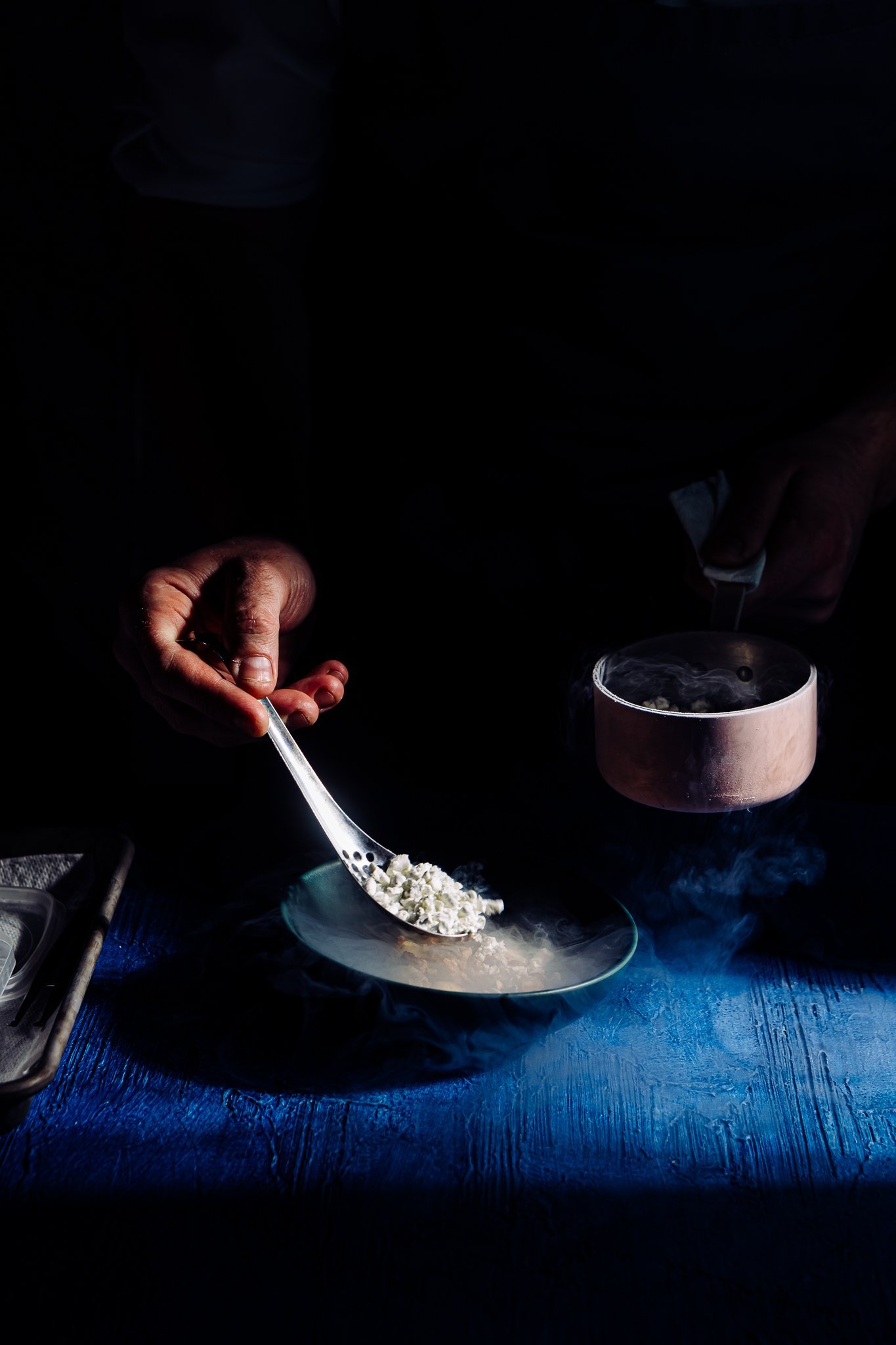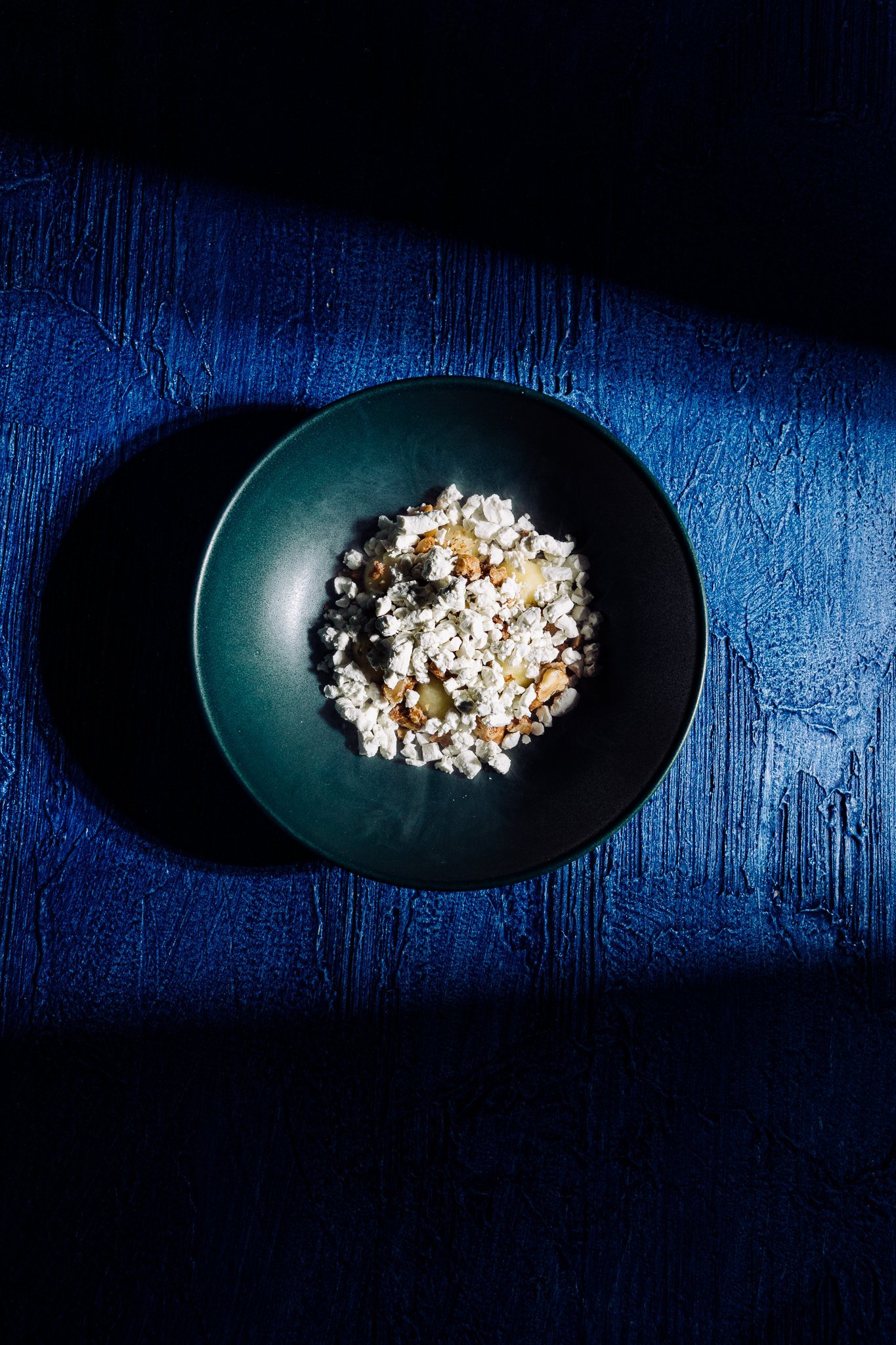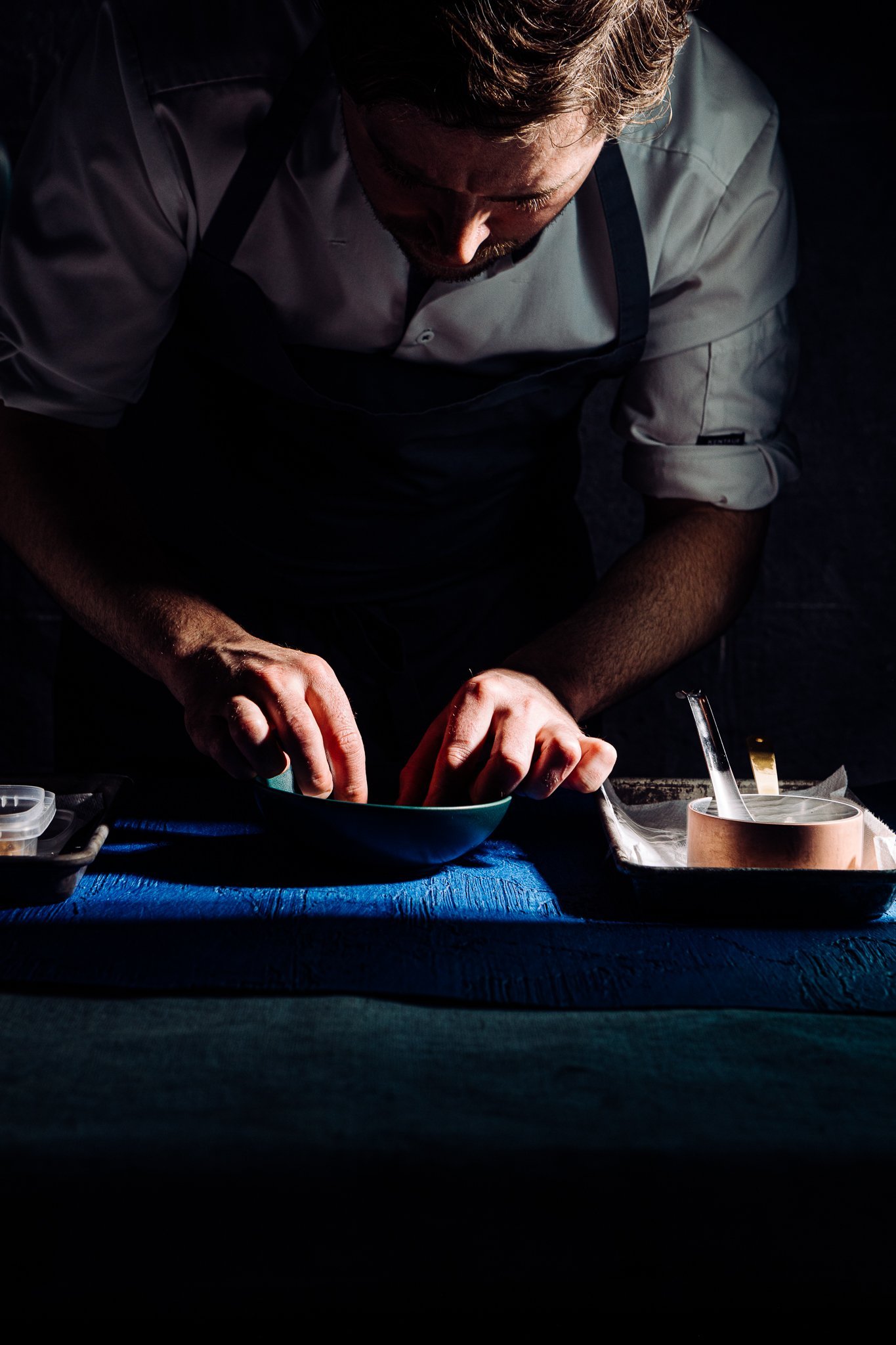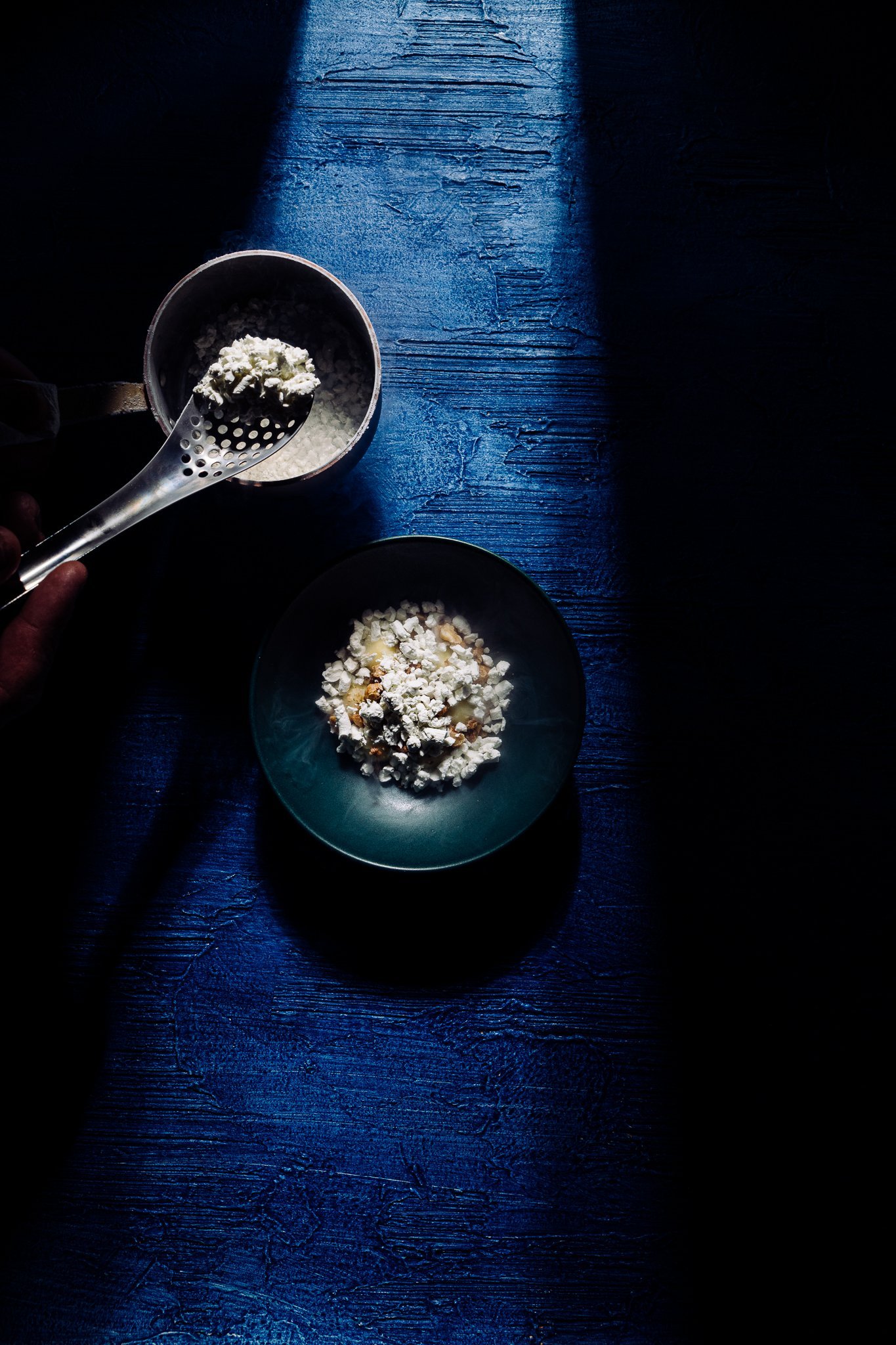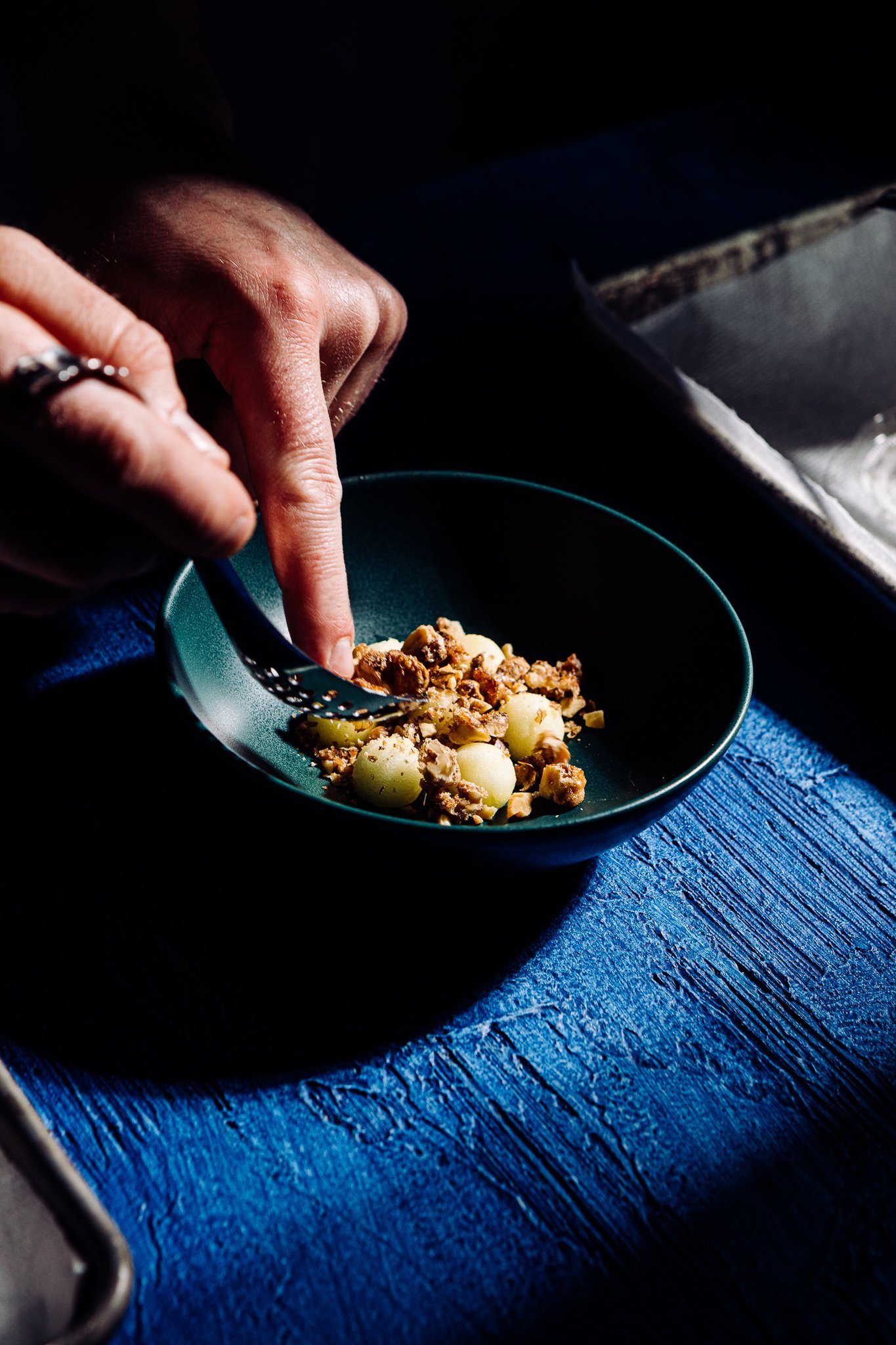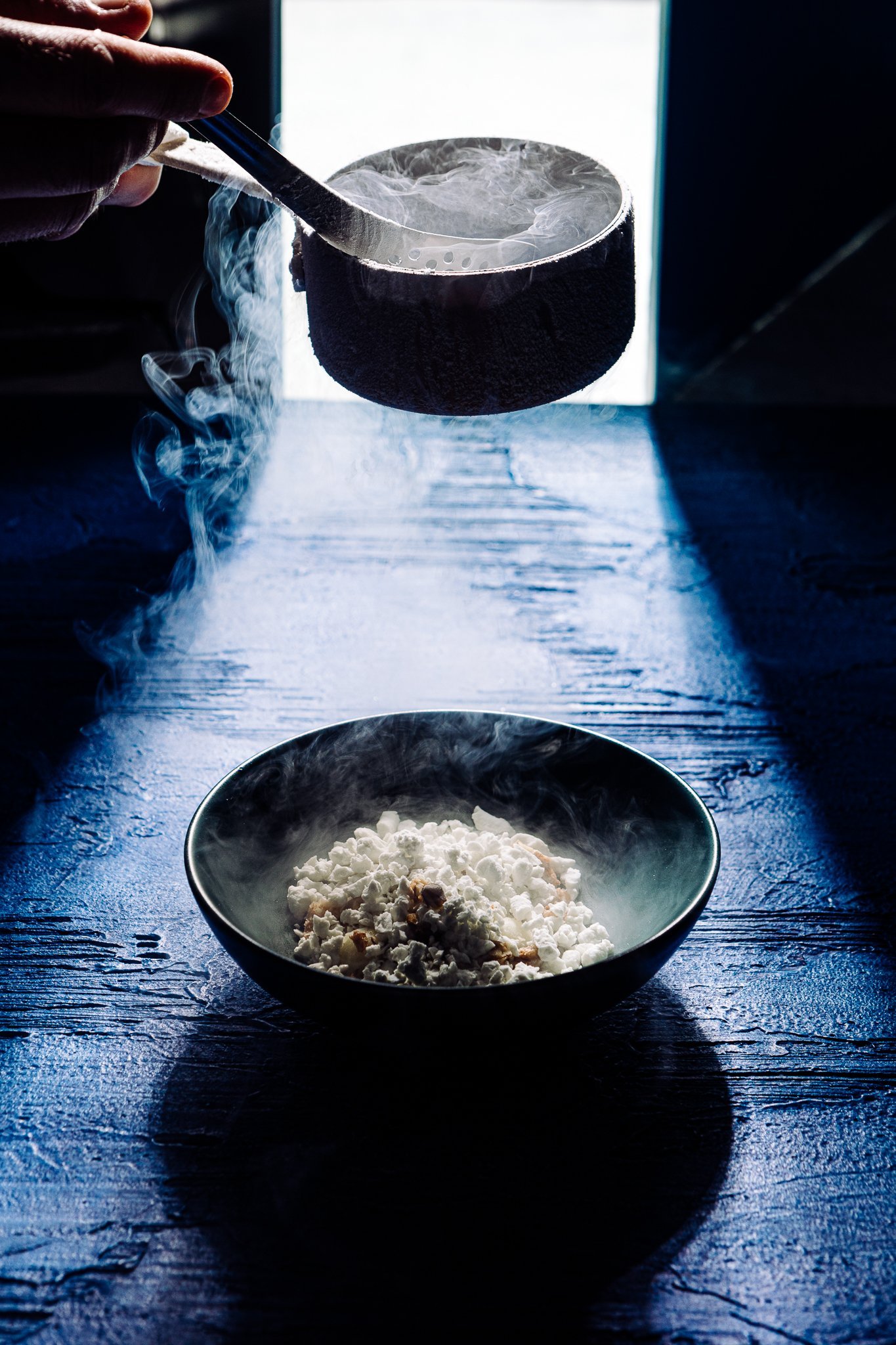Food photography has come a long way in recent years, with the advent of social media and the growing popularity of food bloggers and influencers. While a well-lit, well-composed photograph can be eye-catching, incorporating storytelling into your food photography can make your images truly stand out. Here are some tips for incorporating storytelling into your food photography through the use of lighting and editing.
Tip #1: Modify artificial light to create a moody image.
One of the most effective ways to create a moody image is to modify artificial light. Using tools such as foam boards to add negative fill and bounce light can create interesting shadows and highlight certain elements of the image. Gobos (go-betweens) can also be used to shape light and add depth to the image. By controlling the direction of the light, you can create shadows that give the viewer a sense of time and place, such as using a palm leaf to create a shadow that mimics a sunny day.
This image used a transparent GOBO which utilized the transparent sheet that the chef placed the white chocolate onto. After the Chef peeled off the white chocolate it left a residue on the sheet. We used constant lighting in this image as we were also capturing motion of the Chef plating. The chef moved the transparent sheet over the dish to set aside and we noticed the shadows that were cast over the plate and surface and decided to incorporate this into the image. The fun part about this image is that even the happy accident told the story not only about the food but also crew that was working on this shoot, in a way, breaking the fourth wall. Never be afraid to experiment on your shoot as it can be incredibly rewarding!
Tip #2: Experiment with hard lighting and reflectors.
While soft lighting is often preferred in food photography, hard lighting can be used to great effect to create contrast and add texture. Reflectors can be used to bounce light onto the subject, creating interesting highlights and shadows. By playing with the angle and intensity of the light, you can create a range of different moods and atmospheres in your images.
This was a fun image photographed for Ecreamery in Omaha, Nebraska. It was incredibly fun working with my brother Sam Foo and Food Stylist Sarah Jane Hunt. I wanted to use lighting to mimic the summer sun on a cloudless day. For me, this mood invokes a nostalgic feeling of my summers growing up in Shenandoah, Iowa where we would stop by our local ice cream shop to get fun flavors of ice cream. We would sit on the back of my uncles pick up and enjoy our cold treat as it melted onto our hands. When I was in college my friend Yarden and I would eat at a Chinese Buffet in Council Bluffs Iowa and at the end we would get soft served ice cream. When we would leave we would throw them in the air and watch them crash onto the pavement. This was some of the inspiration, pulling from my own life stories to add to the image. Food is personal and I encourage you to think about your own relationship with food and experiment adding elements of your story into your food sessions when allowed.
Tip #3: Color grade your photos to add storytelling elements.
Color grading is an important part of the post-processing process and can be used to enhance the mood and tone of your images. Experiment with different color palettes to create a sense of time and place. For example, using warm, earthy tones can evoke a rustic, homey feel, while cool blues and greens can create a sense of freshness and vitality.
Tip #4: Create a narrative with your composition.
Composition is another important element in storytelling photography. Think about the elements in your image and how they interact with each other. Are there certain ingredients that are the focal point of the dish? Is there a particular texture or pattern that you want to highlight? By arranging the elements of your image in a deliberate way, you can create a narrative that draws the viewer in.
Tip #5: Experiment with post-processing techniques to create moody images.
Post-processing techniques such as dodging and burning, selective color adjustments, and adding film grain can all be used to create a moody, atmospheric image. By playing with these tools and experimenting with different combinations, you can create a unique and compelling image that tells a story.
In conclusion, incorporating storytelling into your food photography can elevate your images from mere documentation to works of art. By experimenting with different lighting techniques, post-processing tools, and composition strategies, you can create images that evoke a sense of time and place and tell a story about the food you're photographing. So the next time you're setting up a food shoot, take some time to think about the story behind the food and how you can use photography to tell that story.





